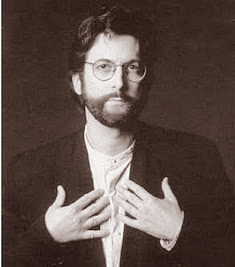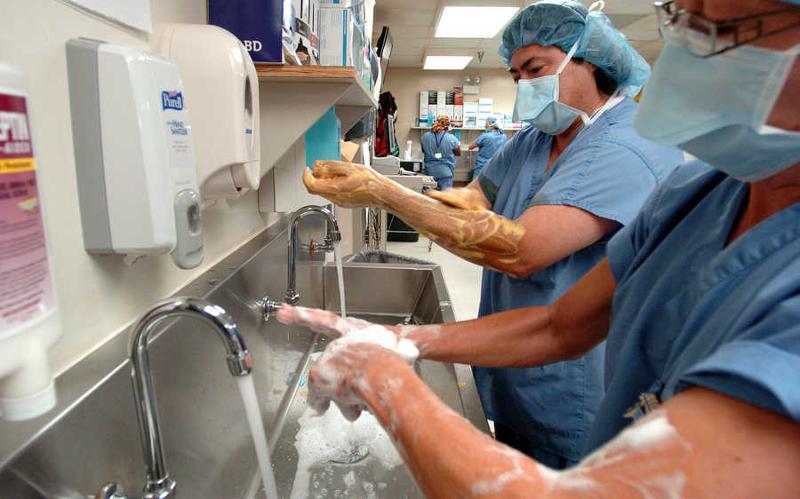|
|
|
|
|
|

a culture of service...
May, 2011
© 2011, Hardy Diagnostics,
all rights reserved
|
Updated and improved...
On-line Ordering

Why on-line ordering from Hardy may be
your best choice...
-
Always Open:
Order whenever you like! Available 24 hours, 7 days a week, including holidays.
-
Favorites:
For faster ordering, you may save a list of your most commonly ordered products.
-
Email notifications:
You will be notified of shipping and hazmat fees, backorders, and the actual shipping date of your products. You will always know the status of your order.
-
Pricing:
You will see any volume discounts or special quoted pricing that you may have.
-
Easy payment:
You may use any major credit card or pay on account (net 30 days)...your choice.
Check it out!
|
|
Brainteasers

How well do you
know your movies?
Part II
Enter here
|
|
Legionella found in hospital faucets

A recent study conducted at Johns Hopkins Hospital in Baltimore found high and persistant counts of the
Legionella
bacillus in patient room faucets.
Strangely, it was more frequently found, and the counts were much higher, in the newer electronic hands-free faucets that were designed to conserve water and prevent cross contamination. The exact cause for the higher counts over the conventional faucets is not known, although the complex valve mechanisms may provide inaccessible areas for the organisms to thrive.
The study also exposed a weakness in the water treatment system, which allowed
Legionella
to thrive in the faucet valves even with counts up to 3,000 cfu/ml.
Many hospitals periodically flush their water systems with chlorine dioxide or use hyperchlorination techniques in an effort to control
Legionella
.
Pseudomonas aeruginosa
,
Stenotrophomonas maltophilia
,
and
Chryseobacterium
and
Aspergillus
species can also colonize hospital water systems.
The Johns Hopkins Hospital is currently in the process of removing all electronic faucets and is replacing them with conventional models.
Hardy Diagnostics provides
BCYE Agar
, which is used to isolate and detect
Legionella
spp., in addition to
several rapid test kits.

Legionella spp. in
electron micrograph

Legionella pneumophila
colonies growing on
BCYE Selective Agar
(Cat. no. G08) under UV light.
|
Phraseology
"The Real McCoy"

Ever wonder where the phrase "The Real McCoy" came from? It actually came from a brand of Scottish whiskey. In 1856
, the G. Mackay and Co. of Edinburgh, Scotland, began to use "The Real Mackay" as their advertising slogan.
When it crossed the Atlantic the spelling shifted to become
"McCoy"
in America. This phrase eventually was used to indicate that something is genuine and authentic.
In 1969, the Coca Cola Company seized the idea and used "It's the real thing" in their marketing campaigns.
|
|
Think about it...
-
Why are the songs that get stuck in my head ALWAYS little kid songs?
-
Why do they sterilize the needles for lethal injections?
-
Why is there a pair of panties but just one bra?
-
How can someone be dirt poor, and another be filthy rich?
-
Does pushing the elevator button more than once make it arrive faster? No? Then why do we do it?
|
|
Who works the most?

It turns out that Mexicans work longer days than anyone else in developed nations, devoting 10 hours to paid and unpaid work, such as cleaning or cooking at home.
Belgians work the least, at 7 hours, compared with an average of 8 hours a day. American workers ranked in the middle at about 8 hours and 20 minutes.
Most unpaid work is housework. Mexicans do the most, at more than 3 hours per day, and Koreans the least, at 1 hour and 19 minutes.
Much of this time is spent cooking. Americans spend the least time cooking each day (30 minutes) and Turks the most (74 minutes). Most people spend around 50 minutes a day cooking.
Shopping also makes up a big part of unpaid work. Most people spend 23 minutes a day shopping, with the French spending the most (32 minutes) and the Koreans the least (13 minutes).
Ref: OECD "Society at a Glance, 2011"
|
|
Famous
Snarky
Remarks

"I feel so miserable
without you...
it's almost like
having you here."
~ Stephen Bishop
American singer-songwriter
Born 1951
|
|

"Never believe anything until it has been
officially denied."
~ Claud Cockburn ~
British Journalist and Author
1904 ~ 1981
|
|
QUICK LINKS...

|
Want to receive the MicroBytes
Newsletter
at home?
CLICK HERE
Want to review past issues
of MicroBytes?
|
|
Did you know?
Hardy Diagnostics...
-
Is celebrating its 31
st
year of serving microbiologists?
-
Manufactures over
3,000 products
for microbiology for you to choose from.
-
Maintains seven distribution centers in the U.S. for faster turn around time to your lab.
-
Is
ISO 13485
certified for the manufacture of medical devices to give you confidence in our products.
-
Offers you its technical manual,
HUGO
, which contains over 4,500 pages of information regarding microbiology.
-
Maintains a worldwide network of over 30 distributors.
|

"It's always darkest before the dawn...
so if you are going to steal your neighbor's newspaper;
that's the time to do it
."
|
|
|
|
|
|
Micro Musings..

|
HardyCHROM

Detect bacteria and yeast
the colorful way!
In 1996, Hardy Diagnostics was the first company to introduce prepared chromogenic culture media to America. Today, Hardy Diagnostics still leads the way in innovative, yet cost effective, new products to detect microorganisms by color development.
View the HardyCHROM
brochure
Request pricing and samples

|

Case histories from Dr. Joe...
Can you
name that pathogen?

CASE HISTORY, No. 1
A 76 year old male with a history of dementia and bipolar disorder was transferred from a nursing home to our acute care hospital due to decreased urinary flow and confusion. The patient was admitted to the ICU for acute renal failure, a Foley catheter was placed and IV fluids given. A catheter urine was sent for culture, followed by two sets of blood cultures. The patient was stabilized and transferred to a medical floor the following day.
The next morning, the urine culture grew >100,000 cfu/ml of alpha looking colonies that were catalase (-), LAP (+), and PYR (+). A preliminary report of possible
Enterococcus
was issued. Positive blood culture bottles, however, showed gram-positive cocci in clusters.

Subcultured colonies were also catalase (-), LAP (+), and PYR (+). Additional biochemical testing indicated the organism was Bile Esculin and Salt Broth (+). Testing on API 20 Strep produced an identification of
Streptococcus acidominimus
(95.9%), which was thought to be incorrect. Molecular gene sequencing confirmed the organism indentification that was suggested by phenotypic test results.
What is the organism?
by Joseph DiPersio, PhD, DABMM
See the answer...
|
From the
Microbiology
Hall of Fame
. . .

Alexandre Yersin
1863 ~ 1943
The discoverer of the
plague bacillus
Alexandre Yersin was a Swiss bacteriologist who worked as a young researcher with both Robert Koch and Luis Pasteur in the late 1800's. He was born in Switzerland in 1863 to a family originally from France. After studying medicine there, he moved to Germany and then Paris. He studied tuberculosis in Robert Koch's lab where he received his doctorate.
He then joined Pasteur's lab and became the co-discoverer of the diphtheria toxin along with Emile Roux.
In 1894 he was sent by the Pasteur Institute and the French government to study the bubonic plague in Hong Kong. It was there, along with Kitasato Shibasaburô, that he made the important discovery for which he is most famous.

Yersin posing by his makeshift lab
in Hong Kong, 1894.
He not only isolated the bacillus that causes the bubonic plague, but he proved that the transmission to humans involved rodents. It wasn't until 1898 that Simond proved that the agent that transferred the plague from the rat to humans was the flea.
And thus the mystery of the cause of plague, the disease that wiped out from 30 to 60% of Europe's population in the 1300's, was finally solved. The bacillus,
Yersinia pestis
, was named in his honor.
After this discovery, he spent most of the remainder of his life in Viet Nam (as he is seen in the top photo above), where he founded a medical school and was instrumental in growing quinine trees for the treatment of malaria. It was in Nha Trang that he died during World War II. He is well remembered in Viet Nam, with a memorial and museum that was built in his honor.
|
Find out what your fellow MicroBytes readers think...

Should hospitals be required by law to publicly report infection rates, surgical complications, and medication errors?
Note: Currently, hospital acquired infection (HAI) rates are required to be publicly reported in 26 states. In addition, 12 states also have laws requiring the screening and/or reporting of hospital acquired MRSA infections.
See the results
from our survey last month
|
|
Take the MicroBytes survey!
Considering a national debt approaching $15 trillion, should taxes be raised?

Give
us your input...
|
Wisdom to ponder...

Sun Tzu
544 BC ~ 496 B
C
A wise Chinese military commander
who wrote "The Art of War,"
a book offering advice
and strategies for
winning any kind of conflict.
"The supreme art of war is to subdue the enemy without fighting."
"There has never been a protracted war from which a country has benefited."
"If ignorant both of your enemy and yourself, you are certain to be in peril."
"Regard your soldiers as your children, and they will follow you into the deepest valleys; look on them as your own beloved sons, and they will stand by you even unto death."
"The general who wins the battle makes many calculations in his temple before the battle is fought. The general who loses makes but few calculations beforehand."
"Know thy self, know thy enemy. A thousand battles, a thousand victories."
"Pretend inferiority and encourage his arrogance."
"All warfare is based on deception."
"To fight and conquer in all our battles is not supreme excellence; supreme excellence consists in breaking the enemy's resistance without fighting."
"Avoid what is strong and strike at what is weak."
"The mark of a great general is that he fights on his own terms or not at all."
________________
|
|
Advice from the Founders...

"Our contest is not only whether
we ourselves shall be free,
but whether there shall be left to
mankind an asylum on earth
for civil and religious liberty."
Sam Adams
American Statesman from Massachusetts
1722 ~ 1803
|
Seeing is Bel
ieving?

What is it?
(No Photoshop was performed on this photo)
_______
"Believe half of what you see
and none of what you hear."
Give up? It's an underwater photo of a dog standing on a step in a swimming pool.
|
|
|
|
|
|
|
|
|